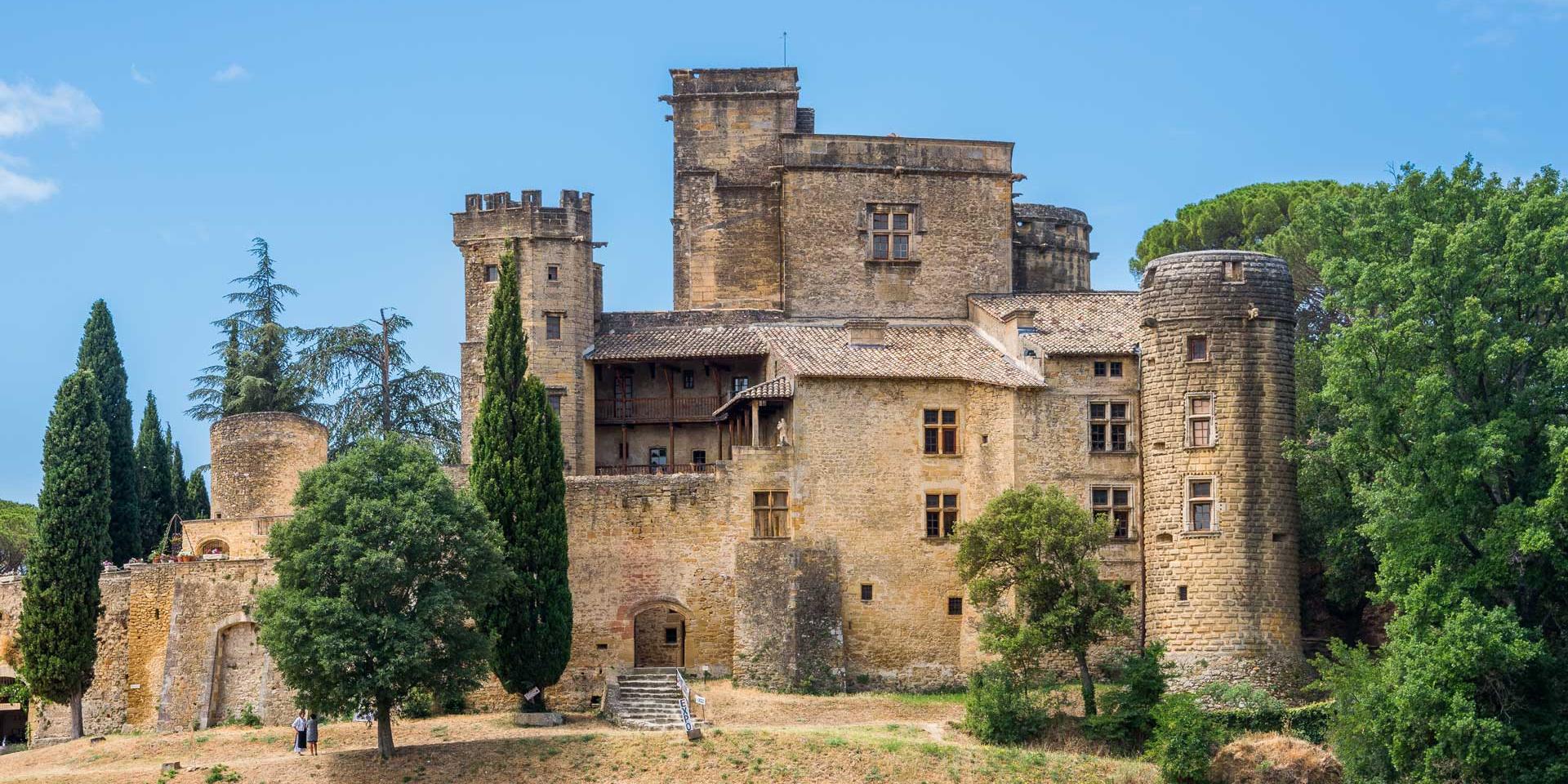The story of the castle
In the 15th century, Foulques d’Agoult, who came from one of the oldest noble families in Provence, had a castle built on the remains of a fortress dating from the 12th century. In 1526, Louis d’Agoult-Montauban and his wife Blanche de Lévis-Montauban came to live in the castle. They had a Renaissance wing added to the building, also known as the new castle, in a surprisingly stylish unit.
At the end of the 16th century, the Château de Lourmarin became the property of the Créqui-Lesdiguière family, who also owned the Château de La Tour d’Aigues, located about fifteen kilometers away. Only the people in charge of administering the land occupied the Lourmarin building.
From the French Revolution onwards, the estate passed into the hands of multiple owners, more interested in managing the land than in the castle, which was gradually falling into ruin. By the end of the 19th century, the Château-neuf (new castle) had become a barn and was occupied by vagrants and travelers who came to take refuge there. In 1920, Robert Laurent-Vibert saved the castle, which was destined to become a stone quarry, by buying it at auction. For 5 years, this industrialist from Lyon, agrégé of history and member of the École française de Rome (French School of Rome), worked to restore the monument to its former appearance. Thanks to research carried out with the curator of the Méjanes library in Aix-en-Provence, he discovered documents that enabled him to restore the Château de Lourmarin as faithfully as possible. The work was led by Henri Pacon, a French architect and carried out by craftsmen from the village. At the death of Robert Laurent-Vibert in 1925, during a car accident, the castle was bequeathed to the Academy of Sciences, Agriculture, Arts and Letters of Aix-en-Provence, which created a foundation in his name in his memory.
In 1973, the building was classified as a Historical Monument and is subject to several protections.
